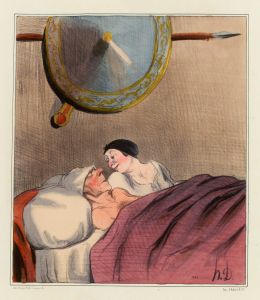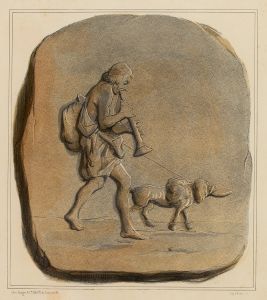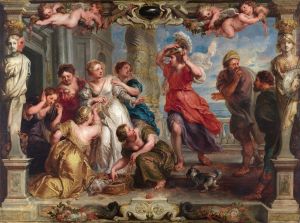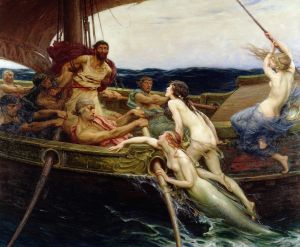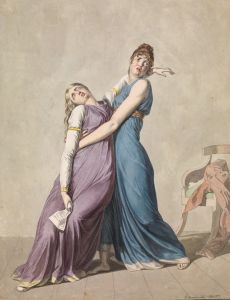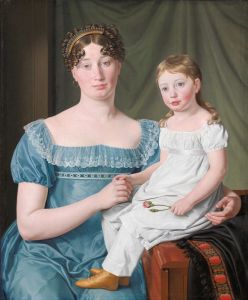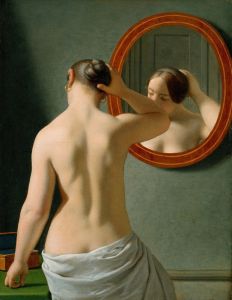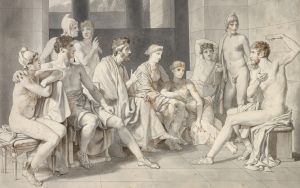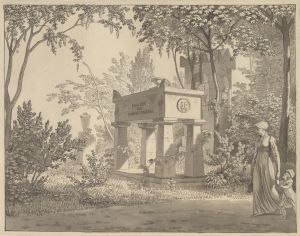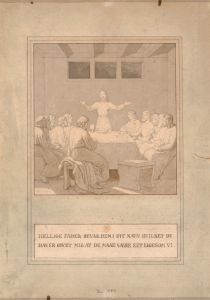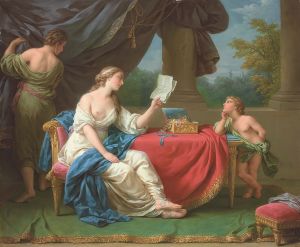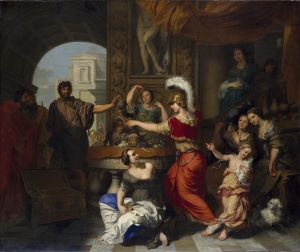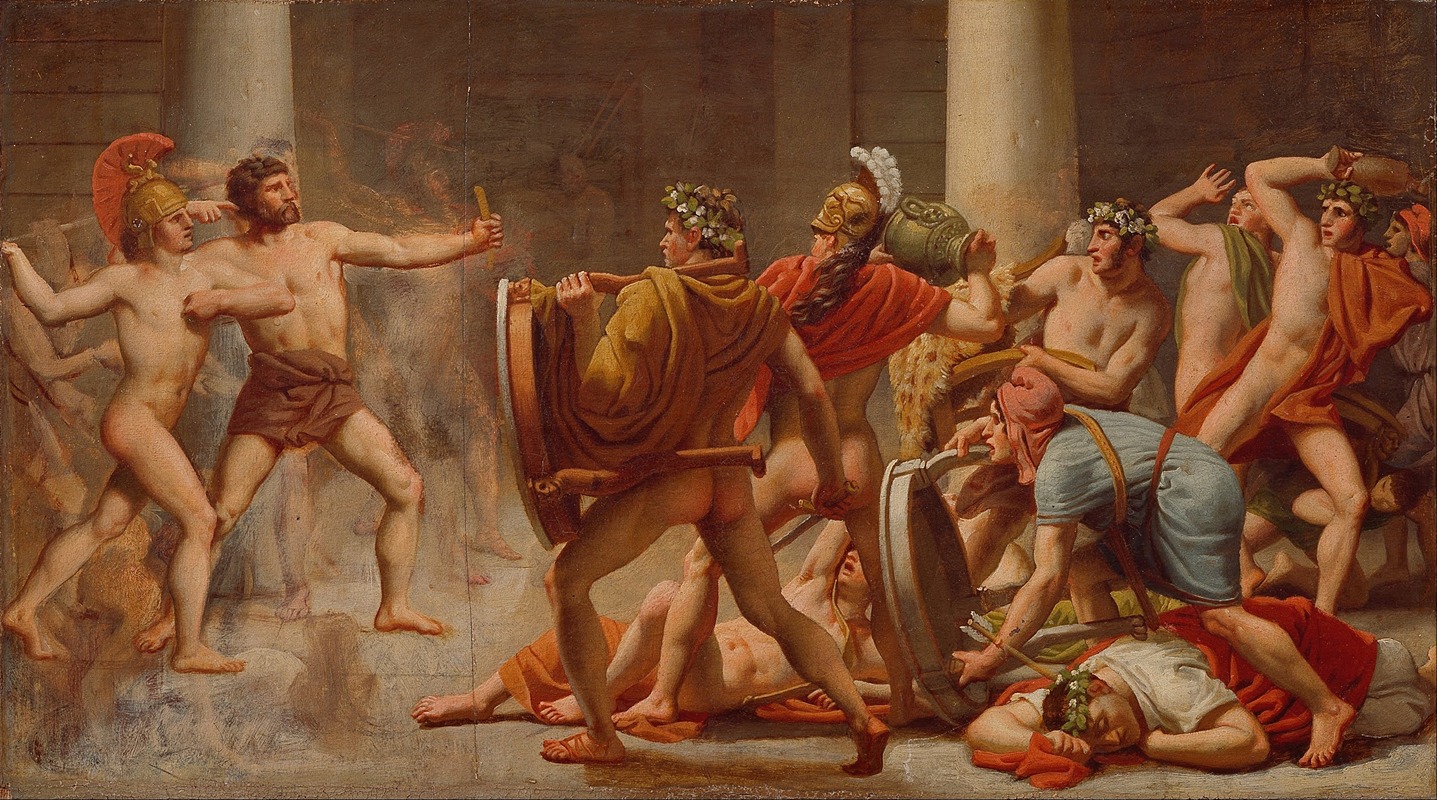
Ulysses’ revenge on Penelope’s suitors
A hand-painted replica of Christoffer Wilhelm Eckersberg’s masterpiece Ulysses’ revenge on Penelope’s suitors, meticulously crafted by professional artists to capture the true essence of the original. Each piece is created with museum-quality canvas and rare mineral pigments, carefully painted by experienced artists with delicate brushstrokes and rich, layered colors to perfectly recreate the texture of the original artwork. Unlike machine-printed reproductions, this hand-painted version brings the painting to life, infused with the artist’s emotions and skill in every stroke. Whether for personal collection or home decoration, it instantly elevates the artistic atmosphere of any space.
Christoffer Wilhelm Eckersberg, often referred to as the "father of Danish painting," was a prominent 19th-century artist known for his contributions to the Danish Golden Age of painting. One of his notable works is "Ulysses’ Revenge on Penelope’s Suitors," which depicts a dramatic scene from Homer’s epic, the "Odyssey." This painting captures the moment when Ulysses (Odysseus), having returned home to Ithaca after his long and arduous journey, exacts vengeance on the suitors who have overrun his palace and vied for his wife Penelope’s hand in marriage.
Eckersberg painted "Ulysses’ Revenge on Penelope’s Suitors" in 1812, during a period when he was deeply influenced by his studies in Paris under Jacques-Louis David, a leading figure of Neoclassicism. This influence is evident in the painting’s composition, attention to detail, and the classical treatment of the human form. The work reflects Eckersberg’s mastery of perspective and his ability to convey intense emotion and narrative through his art.
The painting portrays the climactic scene from Book 22 of the "Odyssey." Ulysses, with the help of his son Telemachus and a few loyal servants, confronts the suitors who have been consuming his wealth and dishonoring his household. Armed with a bow, Ulysses stands as a central figure in the composition, embodying both righteous anger and heroic resolve. The suitors, caught off guard, are depicted in various states of shock, fear, and defiance, adding to the tension and drama of the scene.
Eckersberg’s use of light and shadow enhances the dramatic effect, highlighting Ulysses as the focal point and casting the suitors in a more subdued light. This technique not only draws the viewer’s attention to the hero but also underscores the moral and thematic dichotomy between Ulysses and the suitors. The painting’s classical style and adherence to the principles of Neoclassicism are evident in the balanced composition, the idealized forms of the figures, and the clear, precise lines that define the characters and their surroundings.
"Ulysses’ Revenge on Penelope’s Suitors" is a testament to Eckersberg’s skill as a storyteller through art. It reflects his ability to translate literary themes into visual form, capturing the essence of the narrative while adhering to the artistic conventions of his time. The painting remains an important work within Eckersberg’s oeuvre and a significant example of 19th-century Danish art.
Today, Eckersberg is celebrated for his contributions to art and his role in shaping the Danish Golden Age. His works, including "Ulysses’ Revenge on Penelope’s Suitors," continue to be studied and admired for their technical excellence and their ability to convey complex narratives with clarity and emotion.





